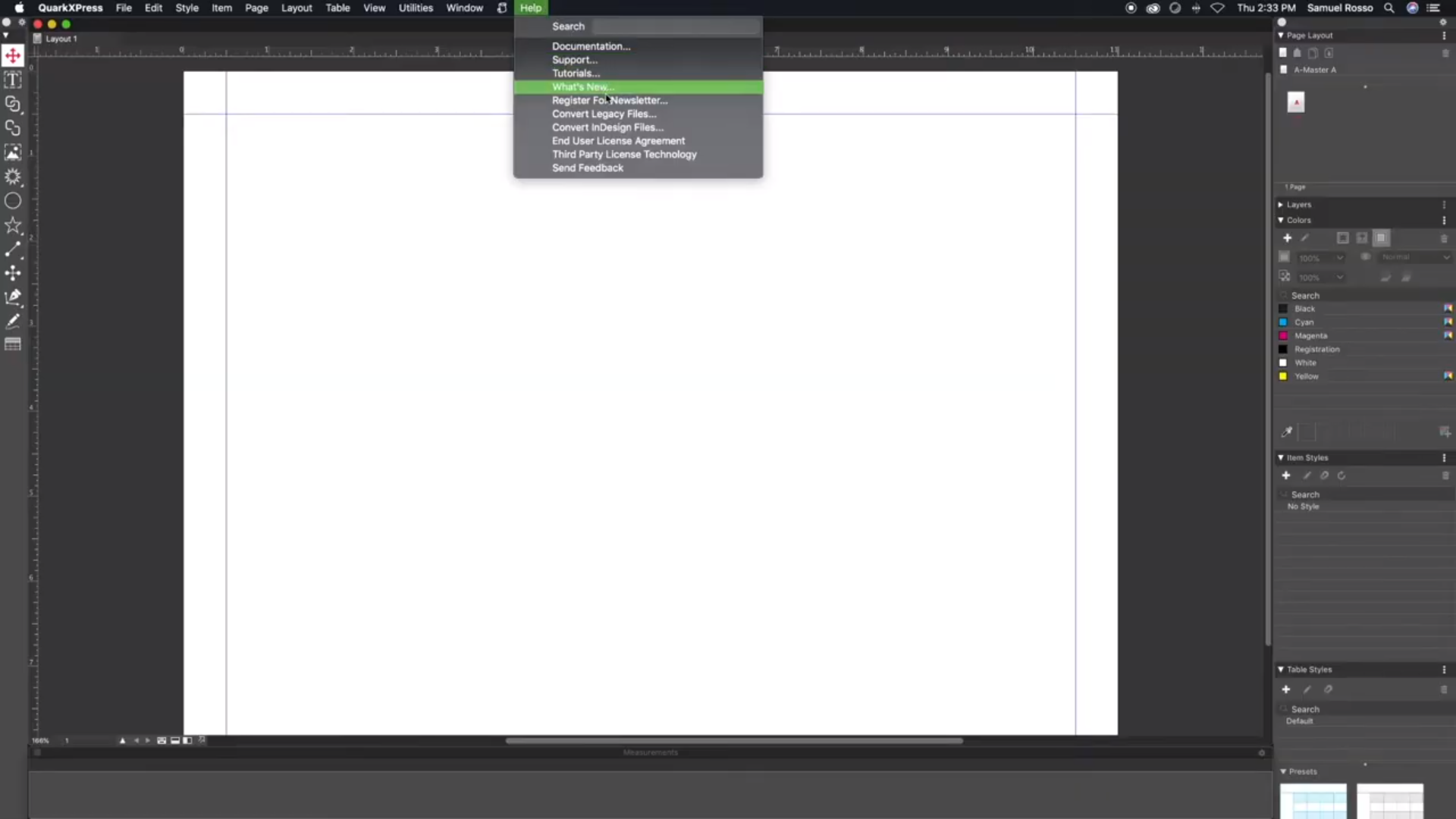
Without question, QuarkXPress 5 is a major upgrade, and adherents to this popular and powerful desktop publishing application should rush right out and get a copy.
What is quarkxpress manual#
The manual for XML support is thorough, but buried in the Documentsavenue.quark Documentation folder.įigure 7: The XML workspace in QuarkXPress 5 lets you add content and create tags.įrankly, if you are going to embark on the complexities of XML markup, you would be better off purchasing a program that can output XML-tagged output ( Adobe FrameMaker or InDesign, for example) and use Adobe Acrobat’s powerful repurposing tools for generating reader output. You can also drag elements types into your document to create placeholders that may be formatted and flow into matching XML data. Quark can incorporate pre-exisiting DTDs into XML templates so you can then map Quark content to XML tags.

XML support relies heavily on DTD (Document Type Definition), which specifies the grammatical structure of a Web page in SGML. To add content, you must drag and drop pieces of the document into the workspace, which is a bit inconvenient and rules out batch XML processing. Quark implements stong XML support via a separate workspace window with areas to create a tag structure and enter content (see figure 7). You can, however, drag and drop items onto the Web page. ( Adobe PageMaker imported the same files without a problem). Although Quark can import HTML files, I consistently got an error message when trying to do so, even with a plain HTML file containing no images or formatting. It’s there, in the form of a little globe icon at the bottom of the Web document window (a reference manual would have helped here). When it came to previewing my document, I couldn’t find a browser preview. When you create a table, you specify that the contents be text or graphics, but not both, although you can later convert content type and embed picture boxes in cells.Tables can’t break across pages, either - annoying limitations to an otherwise powerful new feature.įigure 6: QuarkXPress 5 has a nice new Web toolbar for adding elements to Web pages. Unfortunately, the Word import filter still converts tables to tabbed text so you have to remake the tables in XPress. Resizing is simple too - drag and pull via the Table tool or enter sizes in the Measurement palette (see figure 3). The convenient (and most welcome) table editor converts tabbed text to tables with ease, and you can format tables with custom lines and fills. QuarkXPress 5 has a lot of new goodies, but we were a bit disappointed with some of the implementations.

InDesign does a much better job with type appearance, thanks to its elegant composer that looks ahead several lines before choosing the best spacing for the text block. I wonder, though, why the program still has trouble justifying paragraph text in a pleasing manner.

In addition, there’s a superb text-on-a-curve feature for fancier graphic effects. QuarkXPress’s major strength lies in its excellent type tools, giving you complete control over kerning, tracking, and baseline adjustment. Figure 2: Color-coding in the Layers palette makes it easy to keep track of layers.


 0 kommentar(er)
0 kommentar(er)
